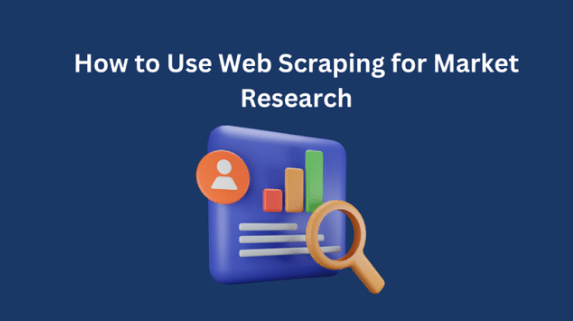
In the digital age, data is one of the most powerful assets businesses can leverage. Market research and competitor analysis, once reliant on surveys and manual research, have evolved significantly with the rise of automation and advanced tools. One of the most effective techniques today is web scraping—the automated extraction of data from websites. By using web scraping strategically, businesses can collect real-time insights to refine their strategies, monitor competitors, and stay ahead of industry trends.
What Is Web Scraping?
Web scraping is the process of extracting structured information from websites using software or scripts. Instead of manually copying data, web scraping tools automate the collection of information such as product details, pricing, reviews, social media trends, or competitor content.
Modern web scraping often leverages Python libraries like BeautifulSoup, Scrapy, and Selenium, or SaaS platforms that offer scraping as a service. This makes it accessible to both technical and non-technical teams.
Why Use Web Scraping for Market Research?
Market research relies on understanding customer preferences, industry trends, and competitive landscapes. Web scraping provides an efficient way to gather this data at scale. Some key applications include:
- Consumer Insights: Scraping product reviews, ratings, and social media comments to understand customer sentiment.
- Trend Analysis: Collecting data from blogs, forums, or e-commerce sites to identify emerging products and demands.
- Demand Forecasting: Analyzing pricing patterns and product availability to predict market shifts.
By turning scattered online information into structured datasets, companies gain valuable input for product development and marketing strategies.
Competitor Analysis Through Web Scraping
Competitor monitoring is a critical aspect of business success. Web scraping provides near real-time visibility into competitor strategies and performance. Practical use cases include:
- Pricing Intelligence: Tracking competitors’ pricing strategies to adjust your own dynamically.
- Product Benchmarking: Comparing product features, descriptions, and specifications across competitors.
- Promotions and Campaigns: Monitoring discounts, bundles, or marketing campaigns to respond effectively.
- SEO and Content Strategy: Scraping competitor blog posts, keywords, and metadata to refine your digital marketing.
These insights empower businesses to make data-driven decisions and maintain competitive agility.
Tools and Technologies for Web Scraping –
Businesses can choose between building in-house scraping systems or using ready-made platforms. Commonly used technologies include:
- Python Libraries: BeautifulSoup, Scrapy, Selenium.
- Cloud Platforms: Octoparse, ParseHub, Apify.
- APIs: Many sites provide official APIs that can be used instead of scraping when available.
Choosing the right approach depends on technical resources, the complexity of data sources, and the scale of scraping required.
Challenges and Ethical Considerations –
While web scraping is powerful, businesses must address challenges and ethical aspects:
- Legal Boundaries: Not all websites permit scraping; checking terms of service is crucial.
- Data Accuracy: Dynamic or frequently updated sites require continuous monitoring.
- Technical Barriers: Sites may block bots using CAPTCHAs or anti-scraping mechanisms.
- Ethics and Privacy: Avoid scraping personal data without consent to stay compliant with privacy laws.
Responsible scraping focuses on collecting public data ethically while respecting legal frameworks.
Conclusion –
Web scraping has become an indispensable tool for modern businesses seeking to strengthen their market research and competitor analysis. By automating the collection of pricing, reviews, promotions, and trends, companies can respond faster, innovate smarter, and compete more effectively. However, success lies in balancing technological capability with ethical responsibility. Businesses that adopt web scraping strategically—while respecting legal boundaries—can turn raw online data into actionable intelligence and a sustainable competitive edge.

